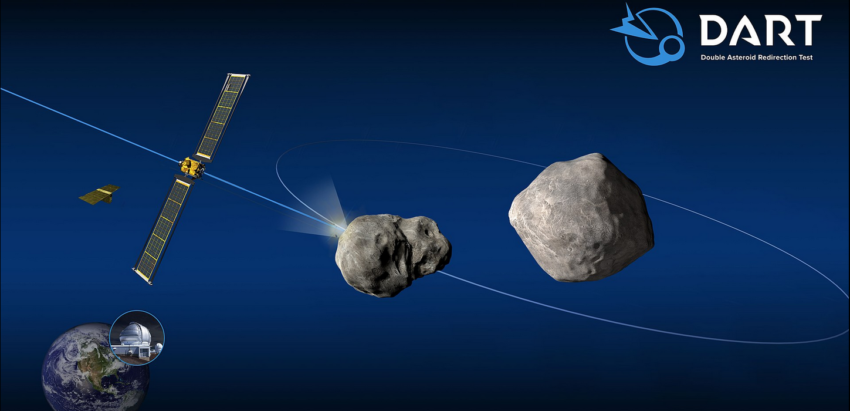| Listen to our audio presentation: HIstory of the Computer |
In a landmark event for planetary defense, the Double Asteroid Redirection Test (DART) mission executed by NASA targeted Dimorphos, a satellite of the binary asteroid system Didymos. This mission, aimed at assessing our ability to alter the course of potentially hazardous asteroids, has yielded fascinating results, with significant implications for both science and planetary security.
The DART spacecraft collided with Dimorphos on September 26, 2022, marking the first time humanity has intentionally altered the dynamics of a celestial body in space. The primary objective was to assess the feasibility of kinetic impact as a strategy for asteroid deflection. The impact resulted in an immediate change in Dimorphos’s velocity, reducing its orbital period around Didymos by approximately 32.7 minutes.
Subsequent observations revealed a steady stabilization in the orbital period of Dimorphos, culminating in a total change of 33.25 minutes. This adjustment in orbit showcases the kinetic impact’s efficacy in modifying asteroid trajectories, a critical step in validating methodologies for planetary defense.
Moreover, the DART impact significantly altered the physical characteristics of Dimorphos. Originally resembling an oblate spheroid, Dimorphos now exhibits an elongated ellipsoidal shape, with changes in its axial dimensions suggesting a shift in its rotational dynamics. These modifications are crucial for understanding the mechanics of binary asteroid systems and the effects of kinetic impacts.
Researchers also noted an exponential decay in the orbital period change, indicating the presence of a drag-like force, likely from the interaction with debris generated by the impact. This finding underscores the complex gravitational interactions within the binary system and the lingering effects of the collision.
The DART mission’s success illuminates the path for future planetary defense strategies, proving that kinetic impact can effectively alter an asteroid’s trajectory. This milestone in space science not only advances our understanding of asteroid dynamics but also fortifies our capabilities to protect Earth from potential asteroid threats.
The concept of asteroid deflection has evolved from science fiction to a tangible reality, underscored by the DART mission’s achievements. Historically, the notion of altering an asteroid’s path to prevent a potential Earth collision was a theoretical exercise, explored in literature and cinema. However, with the advancement of space technology and the execution of the DART mission, we now have empirical evidence supporting the viability of such interventions.
The DART mission is a pivotal chapter in the ongoing narrative of planetary defense, a field that integrates astrophysics, engineering, and international collaboration. It stands on the shoulders of preceding space missions and theoretical work, drawing from decades of research on asteroid composition, orbit dynamics, and collision modeling.

